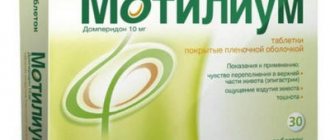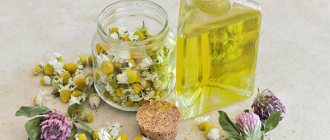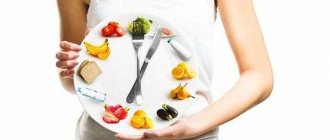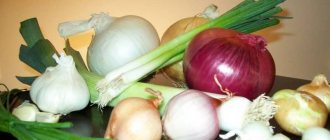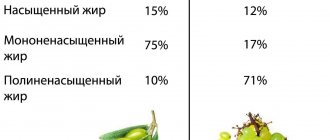Many people suffer from gastrointestinal diseases. The most common disease is gastritis, which is a common inflammation in the gastric mucosa.
As a rule, this disease has a pronounced course and is accompanied by abdominal pain. Getting rid of the pathological process is not difficult. The main thing is to organize complex therapy and follow a certain diet. In today's material we will look at folk remedies for gastritis made from plantain.
Plantain for gastritis
Causes of irritable stomach:
- Incorrect diet or lack thereof;
- Eating heavy food;
- Eating food that is too hot or cold.
Experts recommend making an appointment with a specialist as soon as possible if discomfort and pain begin to appear in the stomach area. The specialist checks the internal organs, after which he announces the type of pathology and selects an individual treatment program.
Doctors recommend that patients use not only medications, but also traditional methods of treatment. This allows you to avoid taking certain medications that have side effects.
Now you can find many recipes with plantain, the systematic use of which allows you to get rid of the manifestations of stomach pathology.
These recipes have long been used by patients in therapy, which guarantees the restoration of normal stomach function. The plant contains many useful substances and can be found almost everywhere.
plantain leaf
Contraindications for plantain leaves
Despite the fact that plantain is called the safest among plants, it also has contraindications. Preparations based on it are prohibited for use during exacerbation of diseases of the gastrointestinal tract. Plantain leaves should be replaced with seeds of the same plant for gastritis with high acidity.
Preparations with plantain cannot be used for thrombophlebitis, allergies and poor blood clotting.
And although there is no data on the dangers of plantain for pregnant and lactating women, doctors still recommend coordinating its use and dosage with your doctor.
Properties of plantain
Previously, people also used plantain to combat stomach diseases, but the plant was consumed raw. Based on the properties of the plant, patients were relieved of gastrointestinal discomfort and pain. The taste of plantain has a slight bitterness and an astringent effect.
Nowadays, methods of treating gastritis are based on both dry and raw plantain.
To eliminate the pathology, the plant must be collected away from highways and cities. If you don’t have the time or opportunity to collect plantain leaves yourself, they can be purchased at pharmacies.
Experts prescribe plantain to patients to combat the formation of stomach ulcers. The plant contains aucubin, which has bactericidal properties.
During therapy, this fragment is key, since the disease is often caused by the bacterium Helicobacter pylori. It is because of this that experts so often recommend adding herbs to the therapy process.
Plantain also has a distinctive regenerative ability. The leaves of the plants contain tannins, which have a positive effect on the mucous membrane as a result of normalizing the production of hydrochloric acid. As a result, an enveloping process is formed that helps stop inflammation.
Medicinal properties of plantain leaves
Plantain leaves contain a rich complex of active substances, including the glycoside aucubin with a wide spectrum of action. This substance has a beneficial effect on the gastrointestinal tract, has antimicrobial, antiseptic, antiviral, antispasmodic, anti-inflammatory and sedative properties. Therefore, preparations based on the leaves of the plant normalize the functioning of the stomach and intestines and are effective in treating diseases of the cardiovascular and nervous system.
Along with the glycoside aucubin, plantain leaves are rich in microelements such as calcium and magnesium, contain flavonoids and saponins, bitter and tannins, vitamins K and U, carotene and pectin, ascorbic, citric and oleanolic acids. Therefore, infusions and extracts from plantain leaves are used to increase gastric secretion.
The mucilage contained in the plant protects the respiratory tract, thins mucus and relieves inflammation. Pectin substances protect the stomach against ulcers, reduce cholesterol and in some cases lower blood pressure.
show more
Official medicine uses plantain seeds and leaves to treat gastrointestinal diseases.
Due to its wide spectrum of action, the plant is included in many medications, as well as multi-component chest and expectorant preparations. Based on the extract of plantain leaves, the drug Plantaglucid is produced for the treatment of acute and chronic gastritis, gastric and duodenal ulcers, enterocolitis, dysbiosis, rhinitis, bronchitis, pneumonia and whooping cough.
When used externally, it is effective for dermatitis, wounds, cuts, bruises, trophic ulcers, boils, abscesses and burns. Plantain is also included in the herb cough syrups Gerbion and Eucabal and the restorative elixir Evalar. Fresh plantain essences are popular in homeopathy.
Composition of medicinal plant
People started consuming the plant hundreds of years ago. The plant can be found in any climate zone, so it has never been a scarce product.
In nature you can find several types of plantain, each of which differs in its composition:
- big;
- average;
- lanceolate.
Experts often use the large species to create medicines. This choice is explained by the high mucus content.
Treatment of gastritis with a plant
Gastritis often occurs due to damage to the walls of the stomach, which is caused by an infection in the form of the bacterium Helicobacter pylori. A person can become infected as a result of neglect of personal hygiene or through utensils. Plantain also has antibacterial properties, which helps stop the growth of bacteria.
The components of the herb during therapy can reduce the concentration of staphylococcus and hemolytic streptococcus.
How plantain helps in the treatment of gastritis:
- acidity production returns to normal;
- eliminates foci of inflammation;
- reduces pain;
- relieves spasm.
It is worth noting that it is better to avoid plantain if the pathology is caused by high acidity. This is explained by the citric acid in the composition, which can worsen the situation.
Before you start using the plant, you must be examined by your doctor. What dishes is plantain used for:
- plant juice;
- decoction;
- infusion;
- syrup;
- tincture.
Traditional methods of treatment are used in addition to drugs. The properties of the herb allow you to get rid of ailments in the epigastric zone and eliminate acute pain.
Reviews from doctors about plantain leaves
Svetlana Barnaulova, PhD, cardiologist of the highest category, herbalist:
– Great plantain is a very accessible plant, which confirms its name. In the USSR, the leaves of the plant were used as raw material for antiulcer drugs, such as Plantaglucid. Today we use plantain in preparations to treat patients with gastroenterological problems, gastritis, peptic ulcers, and other intestinal disorders. Aqueous infusions and decoctions of the leaves can be used to treat bronchopulmonary diseases as an expectorant and improve the functioning of the bronchial and alveolar mucosa. This allows plantain to be used in preparations for the treatment of patients with coronavirus infection and those undergoing rehabilitation after this virus.
Features of using the product
To get the maximum effect from therapy, it is recommended:
- collect the plant away from the city and highways;
- observe the dose of raw materials;
- use the medication on time;
- therapy should last at least 2 weeks (ask your doctor for the exact duration of treatment);
- In addition to natural remedies, use medications prescribed by your doctor.
The plant is also prescribed for the prevention of gastrointestinal pathologies and stool disorders.
pharmachologic effect
Herbal product. It has antiseptic, anti-inflammatory, antispasmodic, enveloping and expectorant effects, promotes tissue regeneration and activates gastric secretion.
The antiseptic effect (against staphylococci, Pseudomonas aeruginosa, hemolytic streptococcus) is due to the presence of phytoncides.
Anti-inflammatory, wound- and ulcer-healing effects are associated with the presence of polysaccharides, pectin and tannins, benzoic and salicylic acids. Polysaccharides activate the formation of interferon, zinc and flavonoids help normalize phagocytosis. The combination of polysaccharides with enzymes and vitamins helps accelerate regeneration. These effects are also closely related to the ability of plantain to increase the resistance of cells and tissues to oxygen deficiency. A pronounced antihypoxic effect is provided by organic (especially citric) and phenolcarbonic (ferulic, caffeic, coumaric) acids, flavonoids (derivatives of luteolin, quercetin, apigenin), vitamin C, copper and zinc. The hemostatic effect is associated with the presence of vitamin K.
Plantain regulates digestion, increases appetite, reduces the tone of smooth muscles of the stomach and intestines, has an anti-inflammatory and regenerating effect in gastritis, gastroduodenitis and other inflammatory gastrointestinal diseases. Iridoid glycosides, aucubin, catalpol and bitters included in its composition enhance the secretion of gastric juice and increase the acidity of gastric contents.
Thanks to mucus, enzymes, and phytoncides, plantain also has an expectorant effect and restores the protective function of the ciliated epithelium of the respiratory tract.
Saponins, hydroxycinnamic acids, flavonoids and pectin substances help reduce blood cholesterol levels.
Methods of treatment with plantain
Experts advise using plantain not only during therapy, but also at the beginning of the onset of the disease. Doctors also recommend the plant as a preventive food for healthy people to improve digestion.
It is worth noting that the maximum benefit can be achieved only with well-developed therapy.
The plant can be used to treat the gastrointestinal tract in several of its forms. This includes the sap of the plant, its leaves and seeds. You can prepare an infusion, decoction or powder from these components.
Plantain seeds for gastritis
Often gastritis with excessive acidity causes heartburn. To eliminate it, the seeds of the plant help, which fight inflammation and envelop damaged internal organs.
First, the seeds are ground into powder, after which they are consumed in one of several ways:
- 0.5 or 1 tsp. seeds are washed down with water to eliminate heartburn. Frequency of use: up to 3 times a day.
- To get rid of stomach pain, use 1 tsp. whole or crushed seeds. First, you need to pour hot water over the seeds, then drink the liquid after it has cooled.
- To get rid of constipation, just take 1 tbsp. l. seeds before bed or in the morning after meals. The seeds cause a slight laxative effect, but this treatment method does not cause diarrhea and cramps, which is not the case with some medications.
- To prepare the decoction, use 1 tbsp. l. keep the seeds in 250 ml of boiling water on low gas for 15 minutes, then get rid of the remnants of the plant in the liquid.
To preserve the mucilage in the seeds as much as possible, you should quickly pour boiling water over them, then immediately drain the water.
Plantain juice for gastritis
The juice of the plant can be used for medicinal purposes. To do this, collect the leaves, then wash them and grind them in a meat grinder. Next, squeeze out the liquid through gauze. To preserve the juice, it must be placed in the freezer. After defrosting, the juice will not cease to contain beneficial properties.
Plantain decoction for stomach gastritis
During therapy, you can make a decoction. How to cook:
- 1 tsp. pour boiling water over dry leaves;
- After 20 minutes, strain the liquid and cool.
- You need to drink the decoction 3-4 times a day, 1/3 cup.
Plantain decoction
It is not recommended to prepare plantain tincture with ethyl alcohol. This treatment method has an irritating effect on the mucous walls of the stomach and destroys enzymes.
It is worth noting that the tincture differs from the herbal infusion. This is explained by the fact that these are two different dosage forms. The infusion is prepared in the same way as the decoction, but the liquid must be kept in a warm place for 2 to 6 hours.
Folk remedies for high acidity
Plantain has been used for gastritis for a long time
Plantain is used in the treatment of acute and chronic forms of gastritis. Medicines made on its basis perform well in pathologies with any variation in acidity. That is, plantain can be used to treat all types of gastritis.
For high acidity, a decoction of the plant is most often used. It allows you to normalize the acid balance in the gastrointestinal tract, relieve symptoms of the disease and accelerate the regeneration of affected tissues. To prepare plantain decoction you need:
- Find and thoroughly wash 20-30 grams of plant seeds. It is advisable that they be pre-dried.
- Pour the drug into a glass of warm water and leave for an hour, closing the lid.
- Now all that remains is to simmer the resulting mixture in a water bath for about 20-30 minutes.
The prepared product is cooled and can be thoroughly filtered. The optimal dosage of plantain decoction is 2-3 tablespoons, which is important to take before each meal.
The duration of therapy with this drug fully corresponds to the drug course being implemented. If desired, the plantain decoction can be modernized, for example, adding a few tablespoons of honey to it or flavoring the finished product with a couple of teaspoons of plant juice.
Such combinations of components increase the healing effect of the decoction and perfectly relieve abdominal pain. It is not advisable to use them often, but they can be used periodically without much danger.
The use of plantain in the treatment of gastritis of various forms
The seeds and leaves of the plant are prescribed for medicinal purposes. The composition of the seeds has a large amount of mucous component, which contributes to the enveloping effect and avoids irritation from food. Seeds are necessary for recipes for decoctions, infusions and juice.
Plantain for atrophic gastritis
For atrophic gastritis, it is recommended to drink the juice of the plant, which allows you to normalize the damaged internal area, as well as smooth out foci of inflammation that cause pain and cramps.
There are several recipes for plantain:
- The juice should be squeezed out of the raw leaves. For taste, you can add the same amount of liquid honey. You need to drink 1 tbsp of liquid. l. before meals 3 times.
- Infusion recipe: you need 1 tbsp. l. pour crushed seeds over hot water and leave the liquid for 1 hour. Drink 1/3 cup half an hour before meals.
- The collection recipe according to Treskunov consists of mixing large plantain, chamomile and yarrow, 1 tsp each. each component. Then pour 1 glass of hot water over the herbs and leave the liquid for 30 minutes, then strain.
First you should drink 1 tbsp. l. every 60 minutes after waking up. Next you need to drink 2 tbsp. l. 4 times a day (an hour before meals and before bedtime).
Plantain for hyperacid gastritis
1 tbsp. l. After collecting the plant, pour 0.5 liters of hot water, then let it brew for 30 minutes and strain. Drink 1/4 glass every 60 minutes for 3 days. Next, you should drink 1/2 glass 4 times a day: 15 minutes before meals and before bed.
Great plantain (from the Latin planta - foot, sole of the foot, which resembles the shape of leaves) is a well-known perennial herbaceous plant from the plantain family with a flowering stem up to 20–30 cm in height. The leaves in the basal rosette are broadly ovate or broadly elliptical, glabrous, entire or slightly toothed with a wide petiole, collected in a rosette. Petioles are equal to the length of the leaf or slightly longer. Peduncles (floral arrows) are erect, finely grooved, glabrous, ending in a long cylindrical spike-shaped inflorescence. The flowers are small, inconspicuous with a brownish corolla, sitting one at a time in the axils of membranous bracts. The fruit is a multi-seeded capsule. Blooms from June to autumn. The fruits ripen in August–October.
Plantains grow in temperate and subtropical zones of Europe, Asia, Africa and America. The most famous are: medium plantain (Plantago media), large plantain (Plantago major) and lanceolate plantain (Plantago lanceolata) - perennial herbs. In Transcaucasia and Central Asia, flea plantain (Plantago psyllium) is found - a branching herbaceous plant up to 40 cm tall.
The medicinal raw materials are the leaves, which are collected throughout the summer. Green, undamaged leaves are cut with a small part of the petiole and dried quickly under a canopy or in a dryer at 40–50 ° C, scattered in a thin layer. With slow drying, the leaves easily turn black (the effect of aucubin glycoside). There is no smell, the taste is bitter, slightly astringent. The seeds are harvested in a mature state along with the peduncles. Raw materials can be stored for three years.
For medicinal purposes, leaves and seeds are used both fresh and dried. Great plantain leaves contain a large amount of mucous substances, polysaccharides, glycosides (aucuban, plantagin), bitterness, tannins, flavonoids, phytoncides, carbohydrate mannitol, sorbitol, organic acids (salicylic, citric, etc.), choline, alkaloids, carotenoids, chlorophyll, vitamins C and K, factor T (promoting blood clotting). The leaves contain a sufficient amount of potassium, calcium, magnesium, barium, and boron. Concentrates copper, bromine. Plantain seeds contain up to 44% mucus, consisting of mannitol and starch, fatty oil, carbohydrates, saponins, tannins and protein substances.
Medicines from plantain have antimicrobial, anti-inflammatory, enhances the secretion of digestive glands, antiulcer, antispasmodic, expectorant, weak antitussive, hemostatic effect. Preparations prepared from plantain also have a laxative and moderate hypotensive effect. Antihypoxic activity is well expressed and manifests itself in various forms of oxygen deficiency of tissues and cells of the body. The antimicrobial effect is due to the presence of phytoncides. Anti-inflammatory, wound- and ulcer-healing effects are provided by polysaccharides, pectin substances, benzoic and salicylic acids, as well as tannins and mucus. The acceleration of regeneration - tissue healing - is facilitated by the combination of polysaccharides with enzymes and vitamins. Increased secretion of the digestive glands is caused by glycosides and bitterness. Plantagin inhibits the cough reflex, helping to subside a paroxysmal and debilitating cough. Thanks to mucus, enzymes, phytoncides and antihypoxic activity, plantain juice restores the protective and cleansing functions of the epithelium of the upper respiratory tract. Increased resistance of organs and tissues to hypoxia is provided by organic and phenol carbonic acids in combination with flavonoids, vitamin C, copper and zinc. Preparations from plantain, relaxing the smooth muscles of the gastrointestinal tract, eliminate pain resulting from spasms of the intestines or stomach.
Plantain leaves are used to obtain the total preparation Plantaglucid, containing a mixture of polysaccharides. The drug is soluble in water to form a mucous solution; insoluble in organic solvents. Reduces the tone of smooth muscles of the stomach and intestines, has moderate antispasmodic, anti-inflammatory effects, reduces swelling of the folds of the gastric mucosa. Regulates the secretion of gastric juice, increasing its acidity, mainly in patients with hypoacidity.
Plantaglucide is taken orally in the form of granules 30 minutes before meals; before taking the drug, the drug is diluted in a quarter glass of warm water. Adults – 1/2–1 teaspoon 2–3 times a day, children – 1/2 teaspoon – 3 times a day. The course of treatment during an exacerbation is 3–4 weeks. To prevent relapses - a teaspoon 1-2 times a day for 1-2 months. Plantaglucide should not be used for hyperacid forms of gastritis and gastric ulcer, as well as duodenal ulcers with high acidity.
In official medicine, plantain infusion is used as an expectorant for bronchitis, whooping cough, asthma and other respiratory diseases.
The infusion is taken orally 30 minutes after meals, 2 tablespoons 2-3 times a day for 7-10 days or as a tincture, 30-40 drops 3 times a day for 2-3 weeks.
To prepare an infusion from crushed raw materials, about 5 g (1 tablespoon) of plantain leaves are placed in an enamel bowl, poured with 100 ml (1/2 cup) of hot boiled water, covered with a lid and infused in a boiling water bath for 15 minutes, then infused at room temperature for 45 minutes. , filter; the remaining raw materials are squeezed out. The volume of the resulting infusion is adjusted to 100 ml with boiled water.
To prepare an infusion from the powder, place 3 filter bags in a glass or enamel bowl, add 100 ml (1/2 cup) boiling water, cover with a lid and leave for 15 minutes, after which the filter bags are squeezed out. The volume of the resulting infusion is adjusted to 100 ml with boiled water.
For constipation and colitis - 100 ml once a day (in the evening). Externally - for washing, lotions on inflamed areas of the skin, wounds, ulcers, bruises, sore spots, for rinsing the mouth. A particularly good effect of the infusion is observed in the treatment of gastritis with low acidity of gastric juice and chronic colitis. Since an infusion of plantain leaves promotes the dilution, dissolution and discharge of sputum, it is actively used for various diseases of the respiratory system associated with the secretion of mucous sputum: pleurisy, pulmonary tuberculosis, chronic bronchial catarrh, asthma, whooping cough and cough. For eye inflammation, the infusion is used for rinsing.
Plantain juice stimulates the secretion of gastric juice and is used for chronic anacid gastritis, gastric and duodenal ulcers with normal or reduced secretion of gastric juice, and chronic colitis. Orally, 1 tablespoon 3 times a day 15–30 minutes before meals. The course of treatment is 1 month.
For long-term, treatment-resistant pneumonia, when there is a weakening of the body's defenses, it is recommended to consume fresh juices from plantain and stinging nettle. For patients with inflamed mucous membranes of the stomach and intestines, it is recommended to add fresh decoction of rice or oatmeal to the juice. For bronchial asthma, when the concomitant disease is peptic ulcer of the stomach and intestines, chronic gastritis with low acidity of gastric juice, pancreatitis, you should use fresh juice from plantain leaves, containing a large amount of mucus (up to 10%), glycoside aucubin, ascorbic acid, vitamin K , bitterness and a number of other components that contribute to the normalization of the gastrointestinal tract and hepatobiliary (biliary) system. Since fresh juice has a regulating effect in case of insufficient gastric secretion, it is also indicated for ulcerative processes in the stomach and intestines that develop against the background of zero and low acidity.
The juice and infusion of the leaves are successfully used for inflammation of the bladder and other diseases, involuntary night urination, hemorrhoids, hemoptysis and malaria. An infusion of leaves and juice is drunk as a blood purifier for various skin diseases: rashes, lichen, acne, furunculosis.
Due to the presence of phytoncides and the antimicrobial effect associated with them against many pathogenic microbes (staphylococci, streptococci, Pseudomonas aeruginosa, etc.), the aqueous solution and juice are also effective in the treatment of wounds, bruises, chronic ulcers, abscesses, fistulas and boils. In this case, the leaves are also used, which are washed and applied to the affected areas in the form of compresses.
Abu Ali Ibn Sina also used plantain leaves as a hemostatic and wound-healing agent for tumors, chronic and malignant ulcers, inflammation of the eyes, liver disease, kidney disease, and elephantiasis. Seeds - against hemoptysis and diarrhea.
Young plantain leaves are used to prepare salads, omelettes, vinaigrettes, and side dishes for meat and fish dishes. Plantain powder can be used to season first and second courses, gravies, sauces and salads. Neither flea, nor middle, nor lanceolate plantain are recommended for use for culinary purposes.
